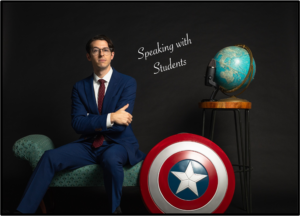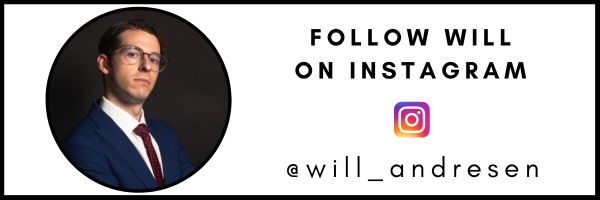TL;DR:
- Attending a talk at the 92nd Street Y, William Andresen discusses the book “Life Under Pressure” by Dr. Anna S. Mueller and Dr. Seth Abrutyn.
- The book explores the social roots of youth suicide and how community tragedies can lead to clusters of suicide.
- Andresen reflects on his own educational experiences, emphasizing the importance of building visible, tangible connections with students to prevent suicide and promote well-being.
- Highlighting the power of one supportive adult, Andresen advocates for specific, meaningful connections with students, echoing the book’s theme of listening and engaging with youth to understand and address their struggles.
*You can find an audio version of this article on Season 2 of the educational podcast, “Speaking with Students.”
Youth Suicide Prevention

It was a busy afternoon in May. I left work and headed to the 92nd Street Y in NYC. If you’ve never been, it is a fascinating community center and cultural contact point. I am most drawn to its talk series featuring some of the leading authors, creators, and personalities of our time, all perfectly in line with one of the phrases that grace their programming: culture, connection, enrichment.
In the past year, I was lucky enough to see a Q&A with John Mulaney and David Byrne right after Baby J was released. It’s not every day you get to see one of your favorite musicians on the same stage as one of your favorite comedians. And author Malcolm Gladwell is a household favorite at the venue. I was lucky enough to see him that evening. He conducted a book talk with Dr. Anna S. Mueller and Dr. Seth Abrutyn, authors of a new book, “Life under Pressure: The social roots of youth suicide and what to do about them.”
We were in a packed room with an audience of educational professionals, people interested in sociology and suicide prevention, and probably Malcolm Gladwell fans. A group in the audience identified themselves as students of Dr. Mueller’s, which I find endearing.
Gladwell is asking about Poplar Grove…and suicide clusters.
It’s important to note that Poplar Grove is an alias for a town with an unusually high cluster of youth suicides. The phenomenon of suicide clusters is something I had never really thought of before, but I was blown away as I listened along with the conversation.
Anna and Seth’s research into youth suicide is in part sparked by tangible patterns. The data does not turn up random scatterings. Rather, the data shows that a tragedy within a community can lead to other tragedies.
Dr. Mueller explains that “Someone posted a question online about suicide contagion, or the fact that after someone has been exposed to a suicide loss, they are on average at higher risk of thinking about suicide or attempting suicide. It is not just underlying risk factors, it’s a real thing… and we realized that very few people were working on this issue, and yet it can be so devastating to a community.”
Anna and Seth set out to explore this by visiting the so-called Poplar Grove. Their goal is to identify the risk factors that create clusters.
Interestingly, Poplar Grove, as explained in the book, is not what they expect it to be. Upon arrival, they anticipate a cold, isolated town with little community connection, where isolation creates the conditions for clusters. They are only further intrigued when they find Poplar Grove to be quite the opposite—a pleasant, affluent, connective town. Their methodology sparks my brain. Throughout their time in town, they interview everyone from young adults, parents, community members, teachers, and care professionals. They dive deep into the community. Their grounding focus is the youth themselves, and their goal is specificity. They seek to ask the question, “Why do people die by suicide here?”
Before we move ahead, I want to take you back to one of the most impactful moments of my education career.
A moment that begins to creep its way back into the forefront of my mind as I listened to this conversation.
It was year four of my education career, 2018, and the staff assembled in the gym during a professional day. Mental health was becoming a greater conversation in education and this was right at the beginning of the push to integrate social-emotional learning. When we entered the gym, we were met with the school pictures of every student. They had been taped up around the walls of the gym. All 600+ students in our high school.
We were each given a roll of green dot stickers, and we were told that prevailing research shows that one adult can be a difference maker. Students are more likely to excel academically, less likely to drop out, and, critically, less likely to die by suicide provided they have one trusted, supportive adult who cheers them on or who listens to them through a difficult time. Remember this detail.
Making Connections Visible: Identifying and Supporting Students with Few Links
So, given the rolls of stickers, we were told to place a sticker on any student with whom we have a significant connection. Meaning, they are not just students in our class or a student in our extracurricular program. Rather, we have gotten to know that student as a person or they have reached out in a time of need. As staff moved around the gym, we placed stickers next to familiar faces. This made our connections visible and tangible.
At the end, we discussed which students had many connections and which had few. It was engaging and interesting. As an educator, I found it energizing.
Before finishing, I made one last loop around the gym. With a notecard in hand, I looked for students with only one dot—those I had identified as connections. With each face, I wrote a name out on my notecard. I left with a list of ten names. Specificity is at play again.
[scroll down to keep reading]Youth Suicide Prevention: Building Better Connections
If connections are such an important hinge factor, then asking the question, “How can we build better connections with the student body” is a meaningful question. But, if we make connections more visible…more tangible, we can ask the more specific question, “Who specifically do we need to connect with? Who specifically might need the extra burst of support?” The potential is immense.
And, one supportive adult can be life-changing.
If we make connections more visible…more tangible, we can ask the more specific question, 'Who specifically do we need to connect with? Who specifically might need the extra burst of support?' The potential is immense. Share on X
“Life Under Pressure” is a book that centers around the critical topic of suicide prevention. And to that end, we see that open, generous listening is essential.
Their effort to conduct interviews across the entire community of Poplar Grove was admirable. So too was their dedicated effort to listen to young people and to give them space for expression. Just as “Life Under Pressure” sought specificity in the conversations with the community of Poplar Grove, I, too, sought specificity, that individual student stories can spark reflection for a wider audience.
This is why I thought so highly of the book discussion at 92nd Street that early May evening. And also why I hope you’ll check out this article in audio form, or any of the other podcast episodes in which I conduct conversations with students as they reflect on their experiences throughout their academic career. There is nothing more noble than the opportunity to listen to students alongside me, allowing them to express their feelings and for you to hear what I hear.
About William Andresen
William Andresen is a high school Social Studies and Film teacher from North Jersey, and a college professor. He holds a Master’s in Educational Leadership from Ramapo College of New Jersey. He prides himself on being an innovative educator and designs lessons and units that engage students through decision-making challenges, student-led discussions, and conceptual history. Will also serves as a GSA advisor and works to support students of the Pride community.
As an educator, he dedicates his energy and enthusiasm toward being a student-first leader in his academic community and aims to build long-term, meaningful relationships that empower students.
Beyond the classroom, Will created and hosts “Speaking with Students” – a new podcast series featuring conversations with former students as they reflect on their academic experiences. He is particularly proud of the way in which the podcast elevates student voice. When not thinking, reading, or talking about education, Will is a frequent reader of Presidential history, an avid runner, an accomplished bowler, and an obsessive fan of The Beatles.




